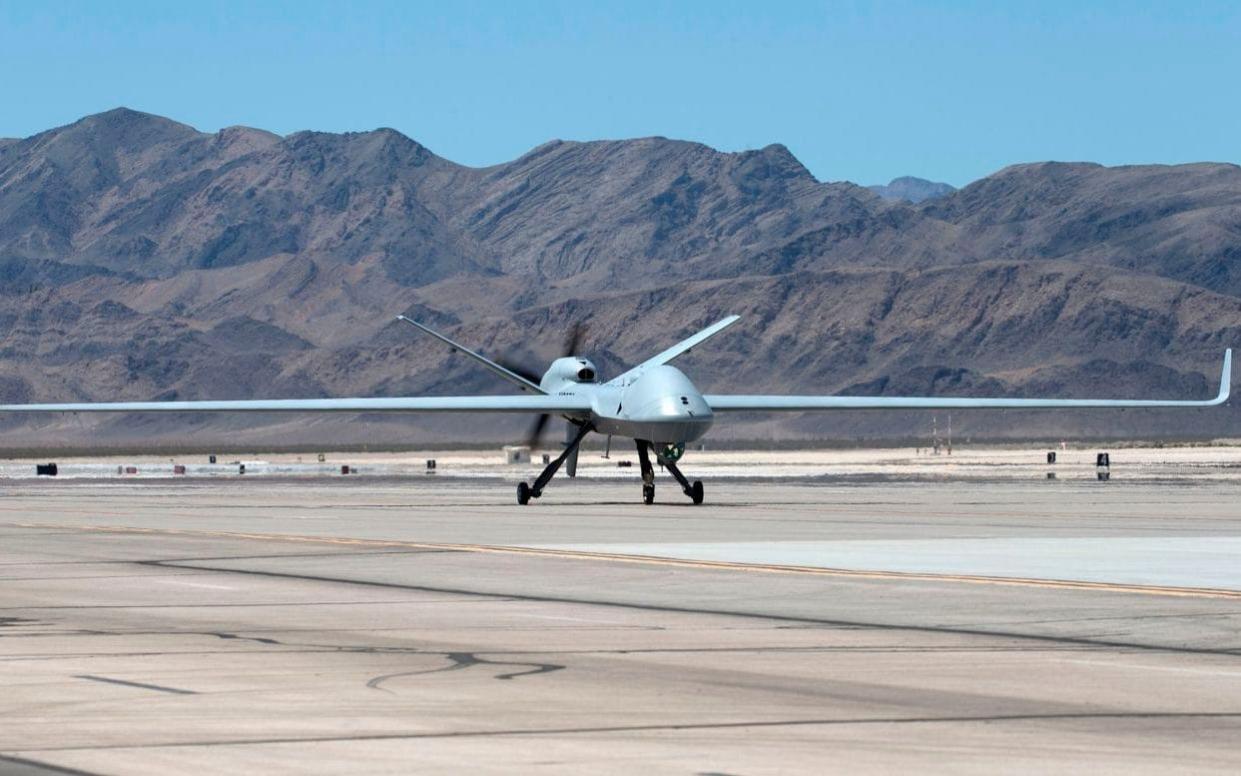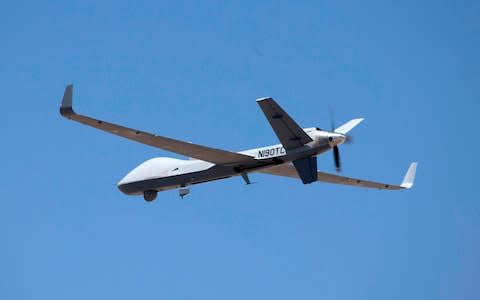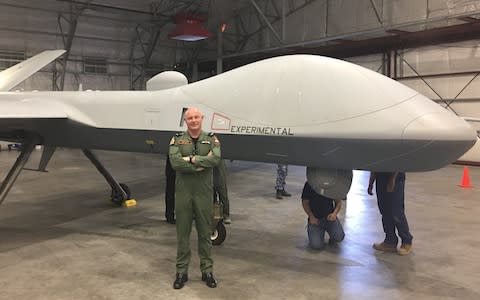RAF's new drone in battle against terrorists: automated killing machine which can be entirely operated from the UK

The RAF’s future drone has been unveiled for the first time to the crews that will fly it .
Britain’s new armed surveillance drones, called Protector, will be able to fly for up to 40 hours, almost double the time of the current Reaper aircraft, and strike terrorists with precision missiles and laser-guided bombs.
New “game changing technology” means that the Protector Remotely Piloted Air System (RPAS) is capable of taxiing, taking off and landing anywhere in the world controlled via satellite link from a remote base.
It means that in future RAF pilots will be able to attack targets anywhere around the world from their home base in Waddington, Lincolnshire, without having to deploy ground crews.
Up to now, drones have needed ground control stations at the airbase they fly from and land at, and have not been certified to fly in regulated airspace alongside civilian air traffic.

The MoD announced that the first Protector flew from Yuma in Arizona to Creech Air Force Base in Nevada, from where the RAF’s 39 Squadron has been flying missions in Afghanistan and elsewhere since 2007 using the current Reaper drones.
RAF personnel from 39 and 54 Squadrons gathered at the base for their first opportunity to see up close the aircraft they will soon be operating.
Air Vice Marshal Harv Smyth, commander of the RAF’s intelligence and surveillance forces, was impressed with the minimal after-flight attention the aircraft required.
“After an hour, with only two people plus a laptop, it was turned round, restarted, taxied out and took off, en route back to Yuma. Brilliant expeditionary RPAS capability” he said on Twitter.
Speaking from the hangar in Nevada, he said: “When we talk about next generation Air Force one of the capabilities that we’re delivering is most definitely Protector.
“This idea that we’ll have an RPAS that can operate anywhere at any time in controlled airspace alongside airliners is an absolutely game changing capability.”
Built by US company General Atomics and due to enter service in 2023, the Protector will be operated by a crew of three, comprising a Pilot, a Sensor Operator and a Mission Intelligence Coordinator. It will carry up to 18 Brimstone missiles, which have been used to attack moving targets such as armoured vehicles or terrorists on motorbikes, as well as Paveway IV laser-guided bombs, spread across nine weapons points on the aircraft.

As the 38ft long aircraft will be certified to fly in European airspace, they could potentially be used in Nato intelligence-gathering missions in eastern Europe, or even over the UK and its waters.
Britain has committed to buying 16 Protectors, with a possible further 10 to follow. They will replace the existing fleet of nine Reaper aircraft which were bought as urgent requirements for operations in Afghanistan.
Like the Reapers, the Protectors will be flown by 13 Squadron (motto: ‘We assist by watching’) based at RAF Waddington and 39 Squadron from the Creech Air Force Base in Nevada.
Wing Commander Colin Welsh, Officer Commanding 39 Squadron (motto: ‘By day and night’) said: “It takes everything that’s great about Reaper and adds a whole bundle of capabilities."
The Protector programme, thought to cost in the region of £1 billion, is two years late as the MoD has had to reorganise and stretch the spending, due to sterling weakening against the dollar. “The exchange rate in 2015 is not what it is now,” said Tim Ripley, of Jane’s Defence Weekly.
Mr Ripley said the Protector programme is hugely innovative and that the RAF is breaking new ground in RPAS technology.
“It offers a truly global power projection capability,” he told the Telegraph.
“Not even the US have the ability to take-off and land drones controlled via satellite from another ground station.
“They have never needed to develop that technology as Uncle Sam has a global network of bases.”
The announcement comes as Pentagon officials confirmed that a US Reaper drone was shot down over Yemen on Tuesday night. A statement from US Central Command said: “We are aware of reporting that a US MQ-9 [Reaper] was shot down over Yemen. We do not have any further information to provide at this time”.
Reuters reported a spokesman for the Houthi regime had said the drone was brought down by a surface to air missile south-east of the capital Sanaa.

 Yahoo News
Yahoo News 
